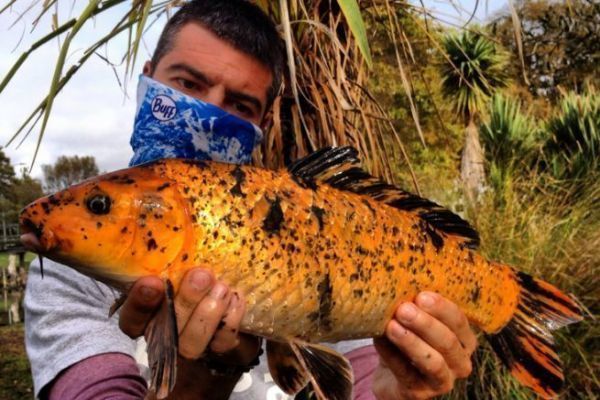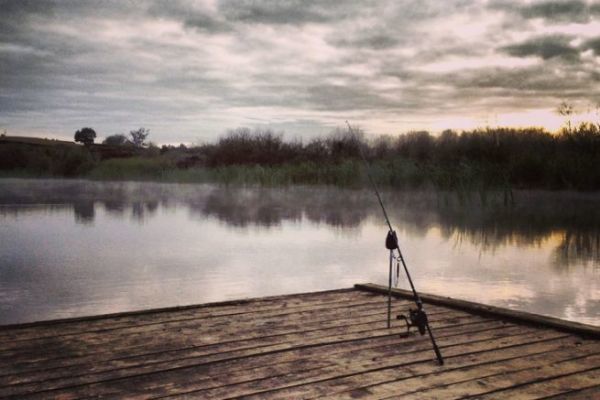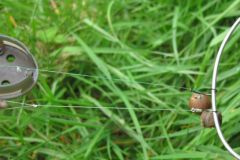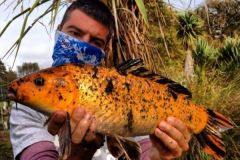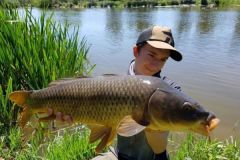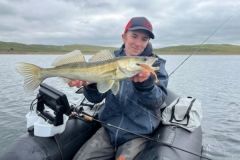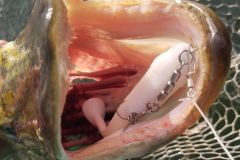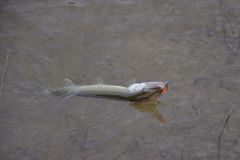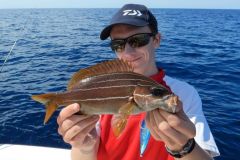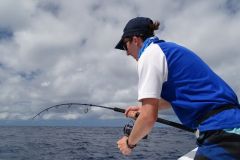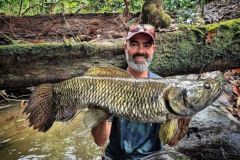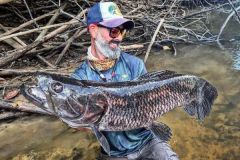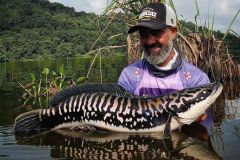I've fished lakes, rivers and small bodies of water right in the heart of industrial zones, just to vary the pleasures. However, I've always adopted an attitude of extreme discretion so as not to attract attention or be forced to kill my catches, convinced that the few fish I catch are not enough to change the situation. So I let the locals deal with their resources.
Equipment designed for mobility
The equipment is limited for maximum mobility and discretion, but also because we're not talking about a hunting specimen here. As far as rods are concerned, my choice for years has been a Shimano STC multi travel, perfect for this type of travel fishing. Lightweight and compact, it allows you to alternate between surface and sink fishing. A Shimano DL 4000 FA reel has been added, a small baitrunner that perfects this desire for flexibility in the methods employed. It is spooled with a Shimano technium 28/100 mono. As the lakes are very shallow, I prefer to start from this discreet base, and add a leader to my leaders as required.
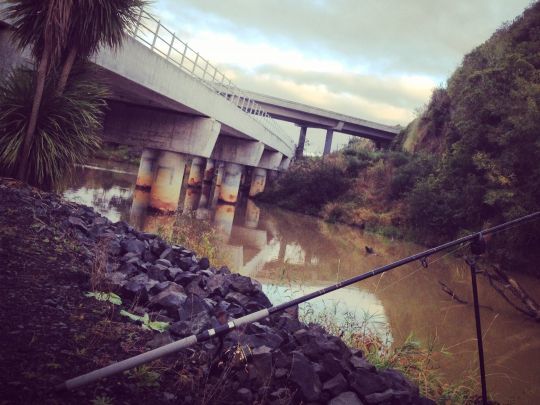
When it comes to editing, I keep things very simple too. That's because I make do with what I've got, and I generally don't have much. A Korda IQ fluorocarbon in 15 lbs will be the basis of all my rigs, whether they're for surface fishing or landing. As for hooks, wide gape N°6, which in my opinion is the most adaptable size. Not too heavy, they won't sink the bread and will allow easy seed fishing. A little leadcore if I'm looking for discretion on these flat bottoms, a few buldos and you're all set.
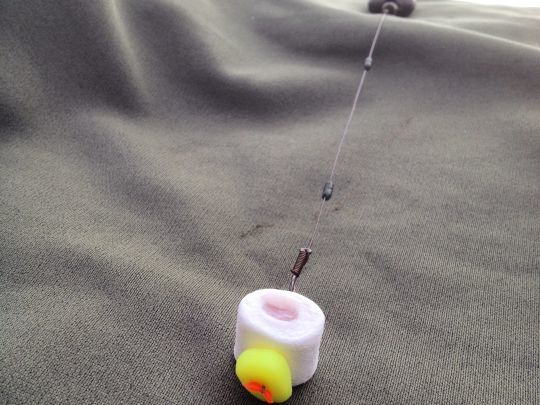
As far as respecting the fish is concerned, a piece of foam gym mat bought at the local mall is more than enough to take care of the catch. Fish are generally not very big, so it's just a matter of keeping their skin from touching the ground. A small, round, compact landing net, bought at a local tackle shop, completes the set-up.
As far as bait is concerned, we're into extreme simplicity: breadcrumbs and sweetcorn are the essentials. Fish are far from educated, so the latter remains the safe bet. A few kernels of floating corn are always welcome to adapt the presentation of baits. They don't take up much space and can save lives. If I need to bait more massively, or if I want to fish at a distance that doesn't allow me to send the seeds by hand, I go back to my recipe from Canada: oat flakes, sweet corn and creamed corn to make the binder. A ball on the lead and vamos!
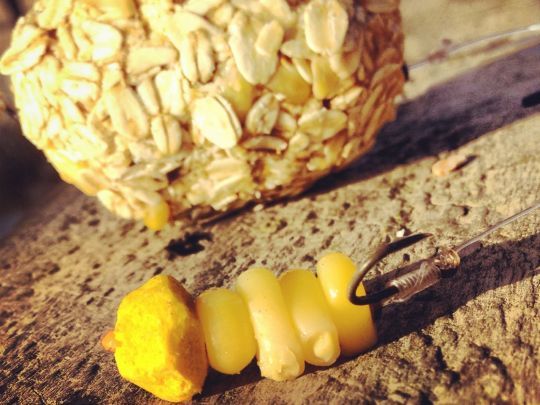
Lake Hakanoa: hot spot for stalking
This was the first place I had the opportunity to fish for koi in New Zealand. Situated near Huntly, this small lake of around 50 hectares has the typical characteristics of water bodies connected to the Waikato River: a predominantly muddy, uniform bottom of around 50/100 cm, with a few areas at 2/2.50 m, and turpid brown water. Mostly populated by cyprinids (roach, koi). It offers the advantage of a path that takes you all the way around. Another plus is that there's a campsite on the shores of the lake, where you can spend a few days enjoying the lake. The northern and eastern shores are wilder and less crowded. The small connecting area with the Waikato River, at the foot of the campsite, is very interesting and always hosts a few fish that you can sight-fish. As the lake is vast but shallow, zone baiting works quite well, except when the multitude of palmipeds present on the lake decide to attack your baits. So I've always had better results fishing in my feet.
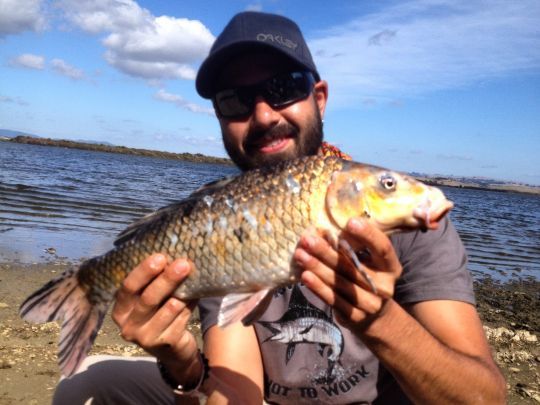
Whongamarino River, a not-so-quiet little river
A change of atmosphere and livestock for this small stream which flows into the Waikato at Mermere, just as it is crossed by Highway 1 on the way to Hamilton. This little river flows through one of the North Island's most important wetlands, which includes peat bogs and other swamps. Its configuration means that the river's fish can swim upstream into the marshy areas, perfectly suited to reproduction. Its natural course, however, has been severely impacted by the hand of man, as the little river now serves as a discharge channel for Lake Waikare. Its course is therefore very linear. There are numerous access points for fishing. Beware of currents at certain times of the year, which can make fishing difficult.
Lake Whangape, an area of Australia
This great lake of 1450 is the second largest body of water in the Waikato hydraulic system, just behind Lake Waikare. Its shores were once covered by lush forests, cleared in the second half of the 19th century to make way for human activities, particularly grazing. The landscape is no less magical for all that. The lake is renowned for its extremely shallow shoreline. Depths can be as little as 40 to 50 cm over several hundred meters. This in no way prevents the proliferation of koi carp, which reside here in impressive numbers. So, even in these particular conditions, fishing is still possible.
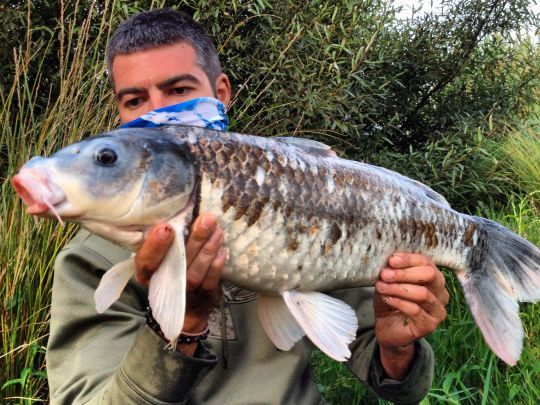
So much water and so little time...
There are so many areas to explore. To have so much potential in such a small area of the country, and especially within an hour's drive of Auckland, is an exceptional asset.

The few passionate carp anglers here don't know where to turn and are almost frustrated by so many possibilities. If the Waikato River seems most promising for specimens and their stalking, every little lake, river or stream is an opportunity to dry up one of these little nuggets from the other side of the world.

 /
/ 

